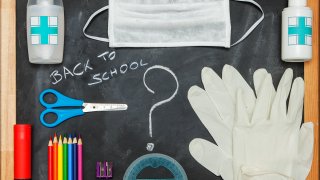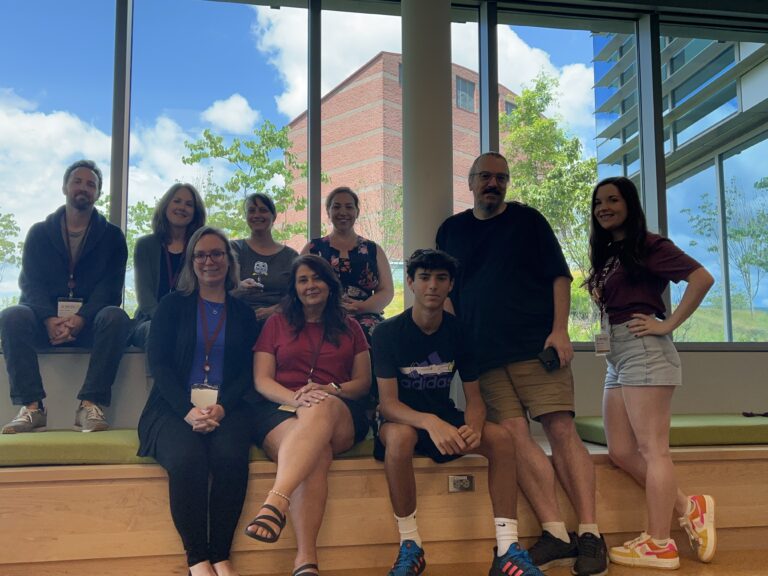
As teachers prepare to return to school, they are — as they do every year — purchasing at least some of their classroom supplies with money out of their own pockets.
This year, those supplies include disinfecting spray and wipes, hand sanitizer, masks and face shields, and protective barriers made out of cardboard or plastic for desks — the kind of protective equipment and tools that will help keep their students and themselves safer amid the ongoing COVID-19 outbreak.
Courtney Jones is a Houston, Texas, elementary school teacher and founder of the #ClearTheList movement and now the ClearTheList Foundation, which seeks to support teachers by raising money to help them buy supplies.
She told TODAY Parents that as summer winds down, teachers are making wish lists on platforms like Amazon and Donors Choose that include different supply requests than ever before.
"I'm seeing a lot of teachers trying to prepare for several situations," Jones said. "A lot of them are starting in school, so they're trying to prepare for that, but then they are also still trying to prepare for distance learning too because of what happened last spring."
Jones said some of the wish lists include new technology like document cameras so teachers can record their lessons. Others include personal protective equipment like masks or even items like plastic shower curtains or cardboard so that teachers can make their own DIY protective barriers for their classrooms, or lanyards for children to clip their masks to their shirts so they don't drop or lose them during the school day.
In a normal school year, students in a single classroom would share a lot of supplies like markers, pencils and glue sticks, but that will not be possible this year. If all students need to have their own sets of those supplies that only they can use for COVID safety, teachers will need more of them, Jones explained.
"We recently had a middle or high school math and science teacher submit an application for a grant to the foundation, and he literally just asked for $500 worth of pencils," Jones said. "I was like, 'Oh my God, I totally get it!' It is really funny, because I'm used to seeing these really long lists of books, markers, crayons, paper, all of that. And this guy just literally had 21 cases of pencils."
How much teachers need to supply on their own varies between rural and urban areas, Jones said. It also can vary among schools in the same district, depending on how districts allocate their budgets.
"Some districts are fully taking care of their staff and their kids, which is really awesome to see. Obviously, that's what should be happening," Jones said. "But then there's the flip side, where it's like, 'Hey, we just had $6 million cut from our math budget across the district. Sorry about that. You've got to figure it out.'"
Some school districts tell their teachers they cannot use platforms like Donors Choose or ClearTheList to help them pay for their supplies, Jones said, either because they believe it makes the district look bad or because they believe it causes inequities in schools when some teachers receive more support than others.
Jones's ClearTheList Foundation has established two significant partnerships this summer — first with Clorox, which donated $1 million to the cause, and most recently with Amazon. Through the #ClearTheList Foundation website, teachers may submit wish lists and include their school demographic information and other details to help the foundation decide how best to help.
"We're trying to keep it really positive and uplifting," Jones said. Individual donors can find teacher wish lists to donate to through platforms like Amazon or Donors Choose, but they can also give to the foundation itself and help fund those grants.
U.S. & World
Jones said she was recently asked where she sees the #ClearTheList movement five years from now.
"I said, 'Well, hopefully, it will be completely irrelevant. I hope we don't need this movement anymore,'" she said. "I think they were very taken aback by that answer, but that's my honest answer. I don't want to grow this into a huge organization. I hope this doesn't have to be a thing."
This story first appeared on TODAY.com. More from TODAY:



